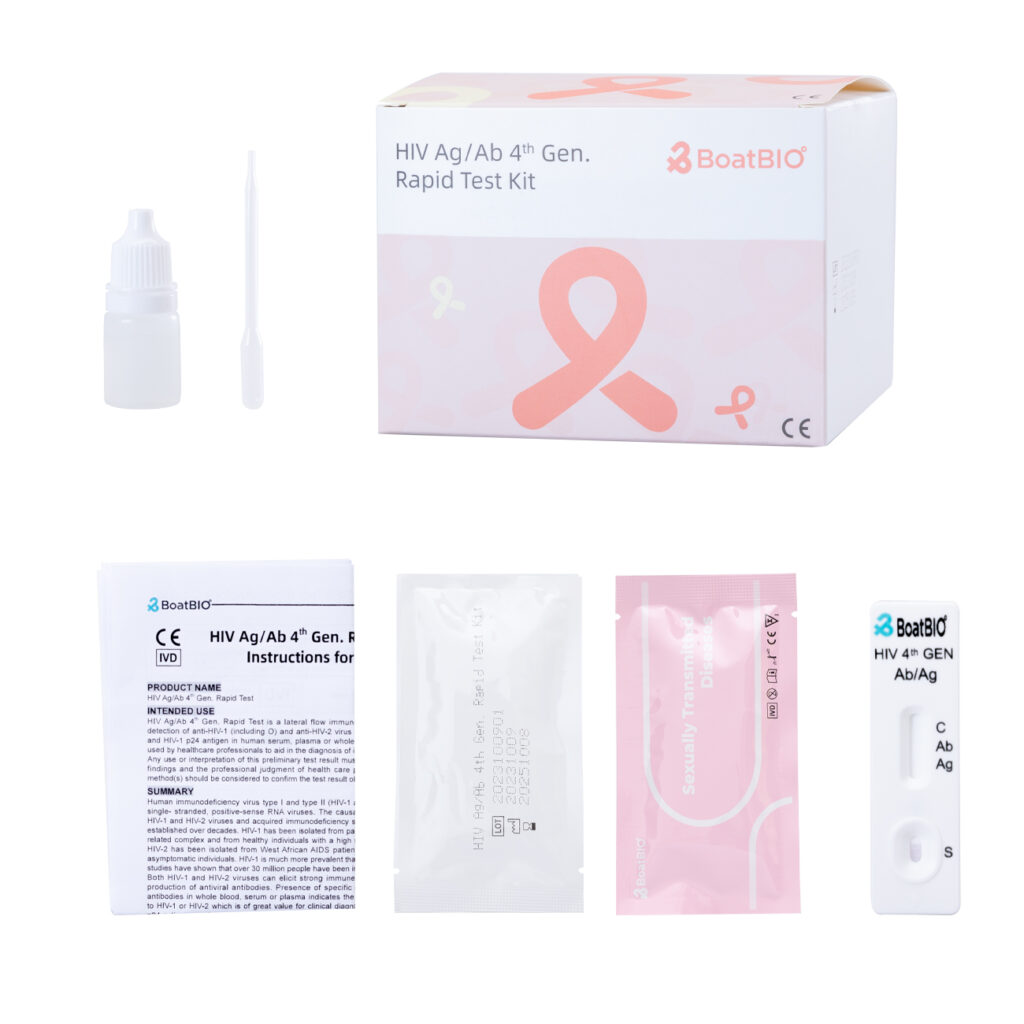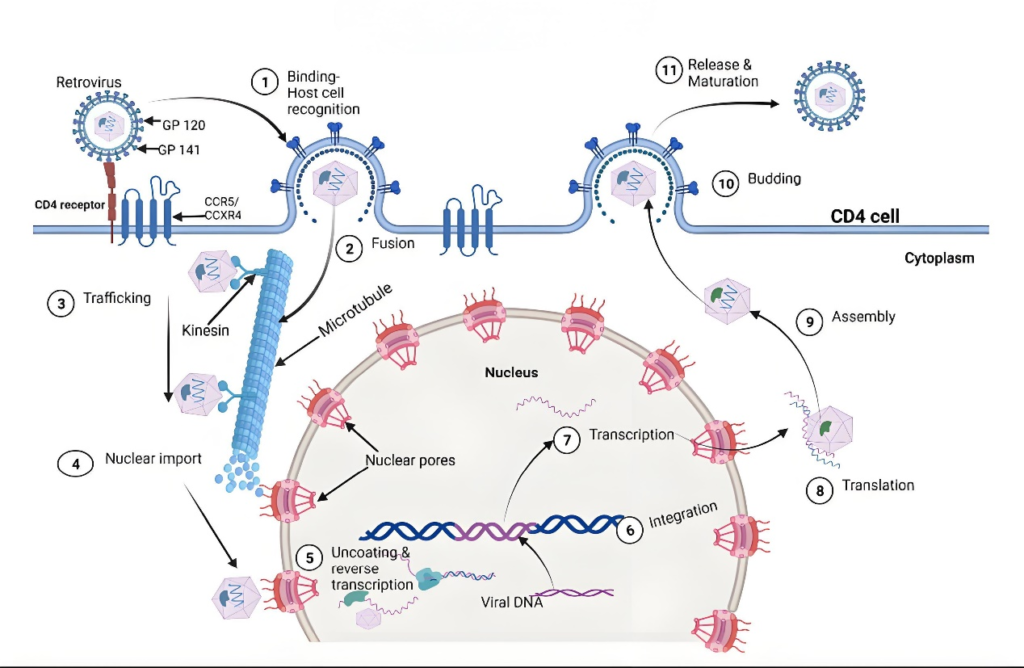What Is AIDS?
AIDS, also known as acquired immunodeficiency syndrome (AIDS), is a chronic infectious disease caused by human immunodeficiency virus (HIV) infection. After HIV invades the human body, it replicates continuously in the body, and mainly attacks and destroys CD4 + T lymphocytes, a key cell in the human immune system, leading to the gradual loss of function of the immune system, making infected persons vulnerable to a variety of microorganisms and tumors that are not usually pathogenic, causing a variety of clinical symptoms and complications, and ultimately leading to death. At present, there are no drugs and effective vaccines to cure AIDS, but they can be prevented.
The following is a brief overview of the pathogenesis of HIV:
- Viral invasion: HIV invades by recognizing and binding to CD4 receptors (mainly CD4 + T cells, macrophages, etc.) And coreceptors (such as CCR5 or CXCR4/CXCR4) on the surface of host cells. The viral envelope glycoprotein gp120 binds to CD4, and gp41 binds to the coreceptor, causing the virus to fuse with the host cell membrane, and core components such as viral RNA and reverse transcriptase enter the cell.
- Reverse transcription and integration: The viral RNA entering the cell is reversely transcribed into DNA by reverse transcriptase, which is then inserted into the DNA of the host cell by integrase to form a provirus, which becomes a latent virus and waits for activation of transcription.
- Virus replication and release: When the cell transcribes the pre-virus, it is activated, transcribed into viral RNA, translated to produce viral proteins, assembled into new virus particles, released from the host cell through the budding process, while destroying the host cell.
- Immune system attack: HIV mainly attacks CD4 + T cells, which are the key cells of immune response. With the loss of these cells, the immune system gradually declines. The decrease of helper T cells leads to the activation of B cells, the blockage of memory cells and antibody production, and the decrease of cellular immune response.
- Immunosuppression: As the number of CD4 + T cells decreases, immunosuppression deepens, immune function degrades, and opportunistic infections occur frequently, which can not effectively cope with the elimination of external pathogens and abnormal self-cells.
- Opportunistic infections and tumors: Immunosuppression makes the host susceptible to pathogens that do not normally cause disease (such as pneumocystis, tuberculosis, fungi, cytomegalovirus), and some tumors (such as Kaposi sarcoma).
Through these mechanisms, HIV gradually destroys the host’s immune defenses, eventually leading to AIDS, a state of immunodeficiency that makes patients vulnerable to a variety of infections and tumors, and ultimately life-threatening. Although HIV is currently incurable, antiretroviral therapy (ART) can effectively control viral replication, restore partial immunity, delay and improve the quality of life, and reduce transmission.

What Are The Testing Methods For HIV?
HIV detection methods generally include antibody detection, antigen/antibody detection and nucleic acid detection. The period from HIV infection to the detection of HIV antibodies, antigens or nucleic acids in the serum of infected persons, that is, the window period of AIDS. Although infected persons in this stage are infectious, they can not be identified by detection means.
With the continuous updating of HIV testing methods, the window period of AIDS testing has been repeatedly advanced. The fourth generation antigen/antibody detection reagent can detect HIV antibody and P24 antigen at the same time, which can diagnose AIDS earlier and more reliably than single antibody detection. At present, the fourth generation of antigen/antibody detection reagents have been used as the standard detection method for HIV screening in the United Kingdom and some other countries.

Accurate virus detection depends on reliable detection reagents, and reliable reagents depend on reagents with good performance. The HIV raw material products independently developed by BoatBio are diverse and have strict quality control standards. Moreover, the precision, specificity and stability of raw materials are excellent. Our company is also equipped with efficient technical support and services, striving to achieve perfect connection between product quality and after-sales service, becoming a trusted choice for scientific research institutions, diagnostic reagent manufacturers and medical institutions, and playing a positive role in promoting the development of HIV detection technology and AIDS prevention and control.
BoatBio HIV-1 Antigen (BoatBio -AP) Performance Test (CMIA):
BoatBio -AP reagent has better precision.

BoatBio -AP reagent has better specificity.

BoatBio -AP reagent has good thermal acceleration stability.

HIV Rapid Test Kit


How To Prevent AIDS?
HIV is mainly transmitted through sexual contact, blood exchange and mother-to-child channels, while there is no need to worry about the risk of infection in daily social interaction. Therefore, by cultivating healthy living habits and wise codes of conduct, we can effectively build a solid line of defense against the invasion of HIV. The most important thing is to have self-esteem and self-respect, advocate a single and loyal partnership, insist on using and wearing condoms correctly in every intimate contact, and block the transmission chain of the virus through sexual means in a scientific way. Keep away from the temptation of drugs, refuse to share intravenous syringes in any form, and at the same time, when carrying out any medical and cosmetic procedures that may involve the exchange of body fluids, choose regular institutions with hygienic conditions to ensure the strict disinfection of medical devices and cut off the way of blood transmission. For expectant mothers, if they are unfortunately diagnosed with HIV during pregnancy, they should start the mother-to-child block procedure in time under the guidance of medical experts, and use modern medical means to maximize the health of newborns and avoid the transmission of the virus.






